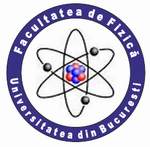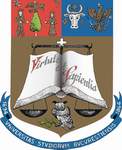| |
 |
UNIVERSITY OF BUCHAREST
FACULTY OF PHYSICS Guest
2025-10-05 22:30 |
 |
|
|
|
Conference: Bucharest University Faculty of Physics 2025 Meeting
Section: Atomic and Molecular Physics. Astrophysics. Applications. Optics, Spectroscopy, Plasma and Lasers
Title:
Food Care: Artificial Intelligence Algorithsm vs Spectroscopy
Authors:
Delia-Mihaela Mihai
Affiliation:
University of Bucharest, Faculty of Physics
E-mail
deliamihai26@yahoo.com
Keywords:
Spectroscopy, Food, Artificial Intelligence, Machine Learning, Convolutional Neural Network
Abstract:
This work explores the application of Artificial Intelligence, with a focus on Convolutional Neural Networks (CNNs), for the non-invasive classification of pear ripeness based on visual data. The study addresses limitations of traditional quality monitoring methods by proposing an automated, image-based approach that ensures high accuracy with minimal hardware requirements. Initially, the project was developed in the context of spectroscopic gas analysis—specifically CO₂ laser photoacoustic spectroscopy (CO₂LPAS) and used to experimentally determine concentrations of ammonia, ethylene, and ethanol, key volatile compounds associated with ripening and spoilage. The study then shifted toward a deep learning solution, using CNNs to detect visual features correlated with biochemical changes. A dedicated application was developed in Python with TensorFlow/Keras to train a CNN model on labeled images of Conference pears at four ripening stages (1, 6, 8, and 13 days post-harvest). Images were converted to grayscale, normalized, resized to 128×128, and multiple hyperparameter configurations were tested to optimize performance. Experimental results showed that classifying ripeness into four categories led to significantly improved accuracy compared to earlier attempts with RGB images or six-class models. The final CNN effectively captured subtle differences in texture and shape, enabling accurate, almost instantaneously evaluation of fruit ripeness. Overall, the project demonstrates the potential of AI-based image classification as a scalable and cost-effective tool in post-harvest quality control. The results further suggest that reducing the number of target classes to visually distinct ripening stages simplifies the learning task and improves model reliability, especially when working with limited datasets.
|
|
|
|